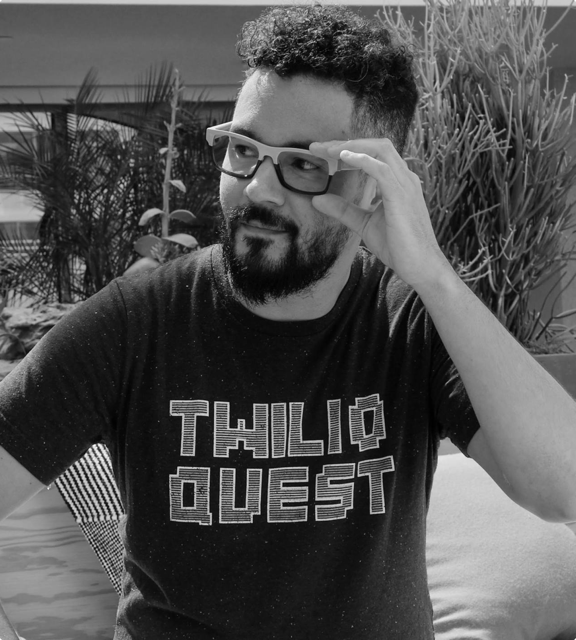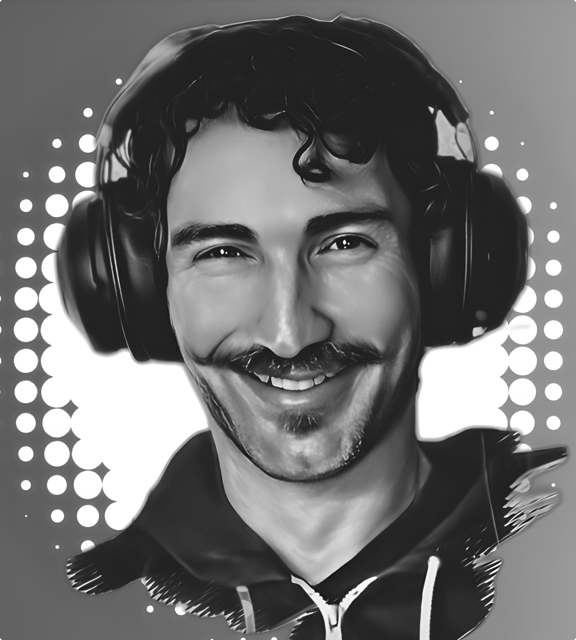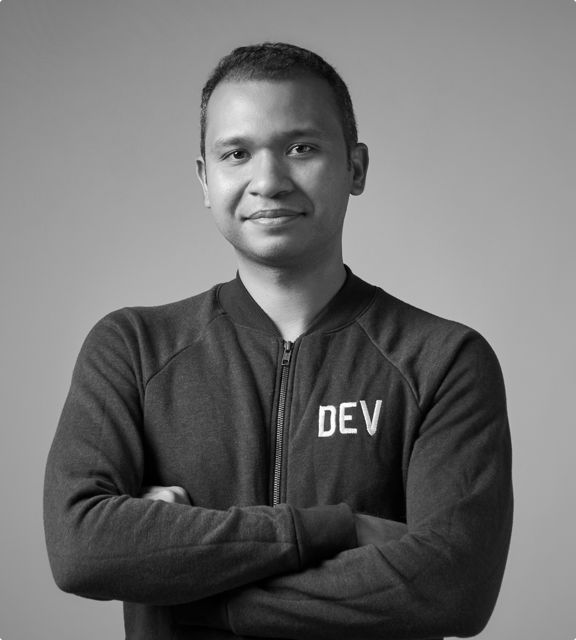
Creando experiencias de usuario guiadas por eventos
Esneyder Palacios
Esneyder Palacios InstagramSOLD OUT

Medellín
November 17th & 18th / 2023

Bringing the Colombian JavaScript community under one roof.

Opening Event and Keynotes in Merged Auditorium.
Mixed Frontend and Backend Talks.

| Day 1 - November 17th | |
|---|---|
| MERGED AUDITORIUM | |
| 7:00 - 9:00 | |
| Registration | |
| 9:00 - 9:20 | |
| Opening Event | |
| 9:25 - 9:50 | |
| Lies, Damn Lies, and Benchmarks - Rafael Gonzaga | |
| 9:55 - 10:20 | |
| Making Art with JavaScript and Garbage - Colleen Lavin | |
| 10:25 - 10:45 | |
| BREAK |
| MAIN AUDITORIUM | SECONDARY AUDITORIUM |
|---|---|
| 10:50 - 11:15 | |
| Hacking a Vending Machine with JavaScript, WhatsApp and Firebase - Luís Leão | - |
| 11:20 - 11:45 | |
| JavaScript en Acción: Innovación y Accesibilidad con Voz, IA y Desarrollo Ágil - Ricardo Castillo | The Scrolling Pineapple Show - Juan Caicedo |
| 11:50 - 12:15 | |
| Unlock the Power of JavaScript Generators - Drishti Jain | Promoviendo Comunidades Sostenibles con JavaScript de la mano de US Green Building Council - Valeria Cerpa |
| 12:20 - 1:50 | |
| LUNCH | |
| MAIN AUDITORIUM | SECONDARY AUDITORIUM |
|---|---|
| 1:55 - 2:10 | |
| Creando experiencias de usuario guiadas por eventos - Esneyder Palacios | Descubre cómo Backstage y los Developer Portals transformarán tu experiencia de desarrollo - Sebastian Gomez |
| 2:15 - 2:40 | |
| Making Music with the Web Audio API - Steve Kinney | Overcoming the complexities of Bash scripts by harnessing the Power of JavaScript - Peter Mbanugo |
| 2:45 - 3:10 | |
| Combinando arte y tecnología: Experiencias inmersivas con Realidad aumentada y geolocalización - Anuar Harb | Full Spectrum File Upload - Austin Gil |
| 3:15 - 3:35 | |
| BREAK | |
| MAIN AUDITORIUM | SECONDARY AUDITORIUM |
|---|---|
| 3:40 - 4:05 | |
| FROM DRAIN TO GAIN! Aprovechamiento de agua para baños sostenibles - Maria Velandia | Mi Experiencia como Programadora Wayuu en la Industria de la tecnología - Rina Plata |
| 4:10 - 4:35 | |
| IDX, WebIDE's and the future of JavaScript debugging - Kaushik Sathupadi | Chatting with the Canvas; How to assemble art from AI Image Prompts - Jorrik Klijnsma |
| 4:40 - 5:00 | |
| CLOSING DAY 1 | |

Mixed Frontend and Backend Talks.
| Day 2 - November 18th | |
|---|---|
| TIME | MERGED AUDITORIUM |
| 9:00 - 9:25 | Optimization and performance analysis of JavaScript applications - Jessica Felix |
| 9:30 - 9:55 | JavaScript can be as fast as C++ - Juan José Arboleda |
| 10:00 - 10:15 | Arte Generativo y Creatividad Computacional con JavaScript: Explorando la belleza de los algoritmos - Maris Botero |
| 10:20 - 10:45 | Explorando la creatividad con JavaScript : Introducción al Creative Coding - Martin Manriquez |
| 10:50 - 11:10 | BREAK |
| 11:15 - 11:30 | Online Q&A with <Sorpresa /> |
| 11:35 - 12:00 | Navigating the Backend Landscape with JavaScript (Panel) |
| 12:05 - 12:30 | Web Wonders: Emerging Trends in the JavaScript UI/UX Arena (Panel) |
| 12:30 - 2:00 | LUNCH |
| 2:00 - 2:15 | Playwright, Selenium or Cypress, what is the best option for JavaScript developers - Miguel Teheran |
| 2:20 - 2:45 | How to consume gigabytes of data in JavaScript without slowing down applications - Erick Wendel |
| 2:50 - 3:05 | JavaScript para construir paz - Juan Almanza |
| 3:10 - 3:25 | Supercharge Your React Apps with GPT in 15 Minutes - Juan Guillermo Murillo |
| 3:30 - 3:50 | BREAK |
| 3:55 - 4:25 | Code & Coffee: Exploring the Terrain for JavaScript Talent in Colombia (Panel) |
| 4:30 - 5:00 | Closing Remarks |
| 5:00 - 7:00 | AFTER PARTY |
En vivo por YouTube gracias a nuestro patrocinador Platinum Platzi.
We are so grateful to all speakers who have participated in past editions of our event. Sharing our knowledge has been the key to our growth over the past 10 years. We are excited to welcome new participants to this year's event. Let's make this farewell party one that we will never forget!


Creando experiencias de usuario guiadas por eventos
Esneyder Palacios
Esneyder Palacios Instagram
Lies, Damn Lies, and Benchmarks
Rafael Gonzaga
Rafael Gonzaga Instagram
How to consume gigabytes of data in JavaScript without slowing down applications
Erick Wendel
Erick Wendel Instagram
The Scrolling Pineapple Show
Juan Caicedo
Juan Caicedo Instagram
Promoviendo Comunidades Sostenibles con JavaScript de la mano de US Green Building Council
Valeria Cerpa
Valeria Cerpa Instagram
Unlock the Power of JavaScript Generators
Drishti Jain
Drishti Jain Instagram
Making Art with JavaScript and Garbage
Colleen Lavin
Colleen Lavin Instagram
FROM DRAIN TO GAIN! Aprovechamiento de agua para baños sostenibles
Maria Velandia
Maria Velandia Instagram
Explorando la creatividad con javascript : Introducción al Creative Coding
Martin Manriquez
Martin Manriquez Instagram
Overcoming the complexities of Bash scripts by harnessing the Power of JavaScript
Peter Mbanugo
Peter Mbanugo Instagram
Arte Generativo y Creatividad Computacional con JavaScript: Explorando la belleza de los algoritmos
Maris Botero
Maris Botero Instagram
Chatting with the Canvas; How to assemble art from AI Image Prompts
Jorrik Klijnsma
Jorrik Klijnsma Instagram
JavaScript en Acción: Innovación y Accesibilidad con Voz, IA y Desarrollo Ágil
Ricardo Castillo
Ricardo Castillo Instagram
Optimization and performance analysis of Javascript applications
Jessica Felix
Jessica Felix Instagram
Javascript para construir paz
Juan Almanza
Juan Almanza Instagram
Hacking a Vending Machine with Javascript, WhatsApp and Firebase
Luís Leão
Luís Leão Instagram
Mi Experiencia como Programadora Wayuu en la Industria de la tecnología
Rina Plata
Rina Plata Instagram
Making Music with the Web Audio API
Steve Kinney
Steve Kinney Instagram
Full Spectrum File Uploads
Austin Gil
Austin Gil Instagram
Supercharge Your React Apps with GPT in 15 Minutes
Juan Guillermo Murillo
Juan Guillermo Murillo Instagram
Descubre cómo Backstage y los Developer Portals transformarán tu experiencia de desarrollo
Sebastian Gomez
Sebastian Gomez Instagram
Combinando arte y tecnología: Experiencias inmersivas con Realidad aumentada y geolocalización
Anuar Harb
Anuar Harb Instagram
Playwright, Selenium or Cypress, what is the best option for JavaScript developers
Miguel Teheran
Miguel Teheran Instagram
IDX, WebIDEs and the future of JavaScript debugging
Kaushik Sathupadi
Kaushik Sathupadi Instagram
JavaScript can be as fast as C++
Juan José Arboleda
Juan José Arboleda InstagramPeople who will be speaking at JSconf.
Centro de eventos de El Tesoro, Carrera 25A # 1A Sur - 45 / Sótano 4 de la torre sur. Medellín, Colombia.
google maps
Strategic location, with easy access to all of the city's points of interest.
Bike parking and chargingFood courtMore servicesContact [email protected], and we'll make something great happen together.
MailWe believe in these companies and people as much as they do in us. We are committed to working together to make the last one a remarkable experience for all of us. It's been a decade of community, innovation, and impact.
Temporal
Temporal TwitterFullstack Labs
Fullstack Labs TwitterNodo - EAFIT
Nodo - EAFIT InstagramThanks to the old and new ones, it's been a pleasure to work side-by-side with you. We hope you keep going making these communities bigger.
We're excited to help you have a fantastic time with us! Here are a few recommendations to make it even better
Thanks to all people who have been part of this amazing journey.
2023
Julian Arango • Eimer Barrera • Andrés Bedoya G. • Josue Bustamante • Maria Cifuentes • Alejandra Duque • María Franco • Christian Galeano •
Viviana Gómez • Andrea Gomez • Dindi Lamadrid • Lizie Perez • Lizz Parody • Anibal Ortega • Vanessa Marely • Santiago Montoya • Maria Moreno • Miguelangel Rendon • Juan Regino • Nathaly Riaño • Ana Salazar • Ana Sosa • Sofia Videa • Rafael Villarreal • Kelly Villa • Diana Vargas • Johana Vrilli • Victor
Zapata • David Zuluaga